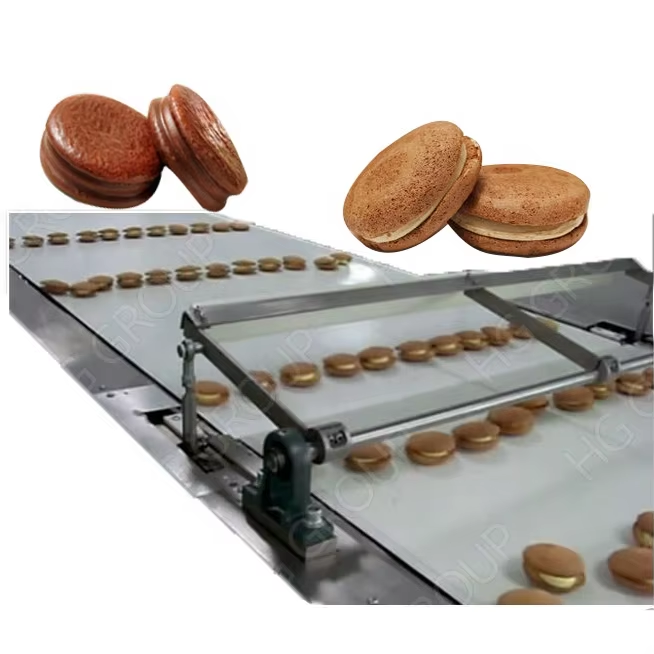Do you know about sandwich cakes? Early cakes were similar to bread, and the Romans would make cakes by adding ingredients such as eggs, butter, honey, nuts, or dried fruits. Although there is no clear record of double-layer sandwich cakes at that time, the form of sandwiching other ingredients in cakes may have already had its embryonic form. For example, ancient Egyptian honey cakes might have been filled with dates and nuts.
Fully automatic Sandwich cake production line lies in its ability to break down the complex process of making sandwich cakes into seven intelligent procedures, requiring no manual intervention throughout—like a precision-engineered "baking robot":
Batter Injection & Molding: The mixer blends flour, eggs, and other ingredients into a smooth batter at high speed. Through the coordination of the paper feeder and injection molding machine, the batter is precisely dispensed into molds, instantly forming uniform cake bases.

Intelligent Baking: The cake bases enter the oven via conveyor belt, where the temperature control system maintains ±1°C accuracy, ensuring even baking and golden, fluffy double-layered cakes.
Rapid Cooling: The baked cakes are quickly cooled on the conveyor to lock in moisture and aroma, preparing them for the filling process.
Automatic Trimming: Robotic arms automatically trim the edges of the cake layers, ensuring each base is perfectly flat and smooth.
Cake Flipping & Filling: The flipping mechanism turns the cake layers over, while the filling machine injects chocolate, strawberry, or other fillings with millimeter precision (volume control error <5%).
Precision Sandwiching: Another cake layer is precisely placed over the filling, and a mechanical press gently compresses them to form a well-defined sandwich structure.
Flexible Upgrades: For premium chocolate pies, a chocolate coating machine can be seamlessly integrated. This adds a silky chocolate "cloak" through automated pouring, temperature control, and solidification, enhancing both appearance and taste.






























